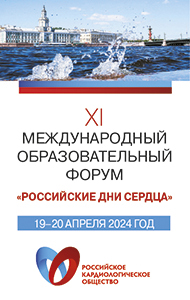ENGAGE AF-TIMI 48 subgroup: Amiodarone as adjunct to low-dose edoxaban reduces ischemic events
Patients in the ENGAGE AF-TIMI 48 trial who received amiodarone at randomization in addition to a lower-dose regimen of edoxaban experienced a reduction in ischemic events vs. warfarin compared with those on the lower-dose alone, according to research published in the European Heart Journal.
Despite the pronounced side effects and numerous drug–drug interactions of the anti-arrhythmic drug commonly used to treat patients with atrial fibrillation, a favorable bleeding profile was also preserved in the lower-dose edoxaban (Savaysa, Daiichi Sankyo) group.
“These results indicate that in patients of ENGAGE AF-TIMI 48 co-administered with amiodarone, [the lower-dose regimen of] edoxaban achieves a ‘sweet spot’ between protection from ischemic events and bleeding,” the researchers wrote.
Conversely, amiodarone demonstrated no effect on the relative efficacy and safety profile of edoxaban among patients on a higher-dose regimen in the exploratory analysis.
Christian T. Ruff
“A possible explanation for the differential effect of amiodarone on the relative efficacy and safety of the lower- and higher- edoxaban regimens is the increase in edoxaban concentration due to inhibition of p-glycoprotein by amiodarone,” Christian T. Ruff, MD, of the cardiovascular division, Brigham and Women’s Hospital, Harvard Medical School, told Healio.com.
Ruff, with Jan Steffel, MD, of the department of cardiology, University Heart Center Zurich, Switzerland, and colleagues from the TIMI Study Group and other institutions analyzed 2,492 patients (11.8%) with atrial fibrillation and moderate-to-high stroke risk from the phase 3, multinational trial who were receiving amiodarone when randomized to edoxaban, either 60 mg or 30 mg daily, or warfarin.
The investigators assessed efficacy primarily on stroke or systemic embolic event and also looked at ischemic stroke, hemorrhagic stroke, and all-cause and CV mortality.
The researchers evaluated major bleeding, based on the International Society on Thrombosis and Hemostasis, as a main safety outcome and also assessed non-major but clinically relevant bleeding and intracranial hemorrhage.
Jan Steffel
The incidence of stroke or systemic embolic events was lower with 30 mg edoxaban vs. warfarin in patients on amiodarone (HR = 0.6; 95% CI, 0.36-0.99) vs. patients not on amiodarone (HR = 1.20; 95% CI, 1.03-1.4). No efficacy interaction was seen with 60 mg edoxaban in patients on amiodarone (HR = 0.73; 95% CI, 0.46-1.17) or not (HR = 0.89; 95% CI 0.75-1.05).
Compared with warfarin, major bleeding was similar with 30 mg (HR = 0.35; 95% CI 0.21–0.59 vs. HR = 0.53; 95% CI 0.46-0.61) and 60 mg (HR = 0.94; 95% CI 0.65–1.38 vs. HR = 0.79; 95% CI 0.69-0.9), independent of amiodarone use.
“Although pre-specified, this subgroup analysis of the ENGAGE AF-TIMI 48 should be interpreted as hypothesis generating,” the researchers wrote. – by Allegra Tiver
Disclosure: The ENGAGE AF-TIMI 48 study was supported by Daiichi Sankyo Pharma Development. Steffel reports receiving consulting and lecture fees from Amgen, Astra-Zeneca, Bayer, Biotronik, Biosense Webster, Boehringer-Ingelheim, Boston Scientific, Bristol-Myers Squibb, Daiichi-Sankyo, Cook Medical, Medtronic, Pfizer, Sanofi-Aventis, Sorin, and St. Jude Medical; grant support through his institution from Bayer and Daiichi-Sankyo; and being co-director of CorXL. Please see the full study for a list of all other authors’ relevant financial disclosures.
Source: www.healio.com


.jpg)



